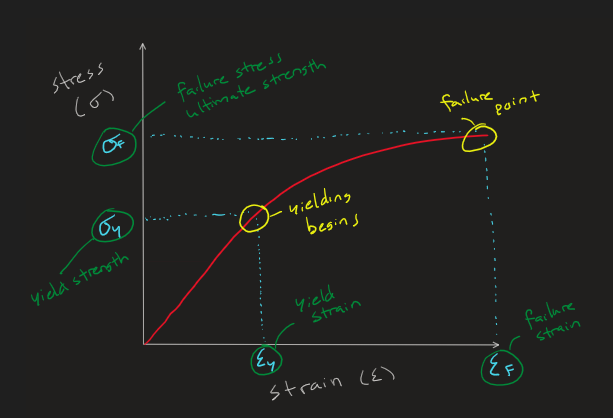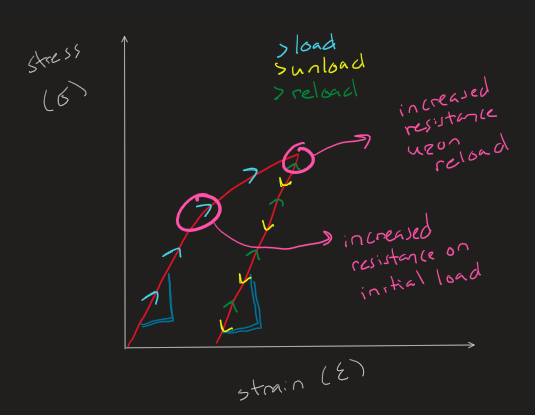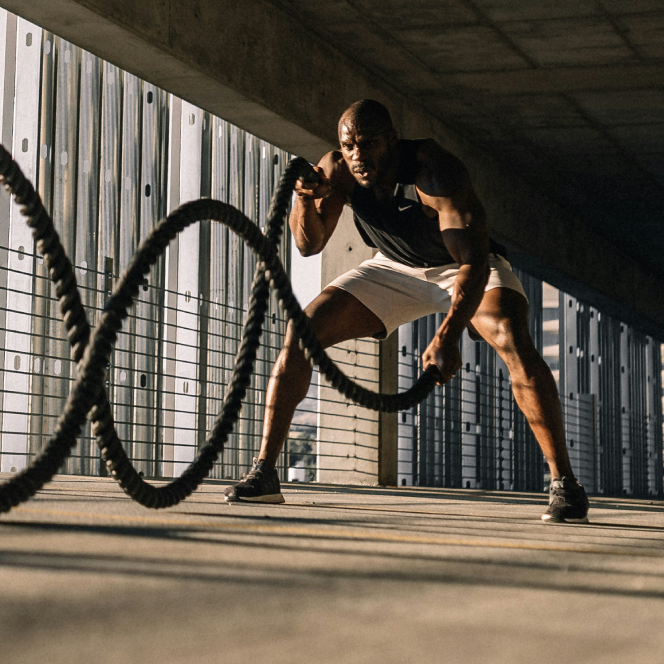Background
As I mentioned in a previous post, my professional background and formal education are in structural engineering. In addition to structural engineering, I also have a minor in Material Science Engineering to which a lot of the information and concepts in this post will be related as well. This post is my second post attempting to combine two of my favorite things – engineering & personal development. When dealing with structural materials, there are a few quantifiable measurements that are taken into consideration when choosing a material for a particular application. A lot of these measurements are pretty straightforward, & intuitive such as ultimate strength, weight, hardness, etc. One material property that is not as well-known is the material’s ductility, which corresponds to how far a material can be strained beyond its yield strength. it is important to note here that there is a difference between yield strength and ultimate strength. Without getting into too much detail, the yield strength is the amount of stress a material can take before it deforms permanently – i.e. it will not rebound back to its original shape/size upon an unload. The ultimate strength of a material is the amount of stress a material can take before it fails completely. The ductility of a material is essentially the difference in the strain at the yield strength and the strain at the ultimate strength. In other words, the ductility of a material correlates to how tough it is to break even par after it starts to ‘hurt’ (permanent deformation i.e. ‘plasticity’). An illustration showing this concept on a stress vs strain curve can be shown below.

Thoughts
The amount of strain that a material experience is directly proportional to the amount of stress it experiences until it reaches the yield point. Once the material reaches its yield point, the strain starts to increase a little more rapidly due to an equivalent incremental increase in stress. In other words, the material begins to accumulate damage a little faster, or things are getting tougher for the material. The beauty of the yield point in a ductile material is that although it is experiencing increasing resistance, it is not broken. It has plenty of strain left to give even after the strain starts to ramp up. Another beautiful thing about a material yielding (loaded beyond yield point) is that once the material is unloaded and because it is used to that level of strain, the next time it wants to reach that level, it is yet again proportional to the stress applied but this time for even longer. This means that once a material is pushed beyond its yield point, it holds onto that strength. An example of a material stress-strain curve that is loaded beyond yield, unloaded, and loaded again is shown below.

The absolute best thing about this concept of ductility is that it doesn’t just apply to structural materials… it applies to the human mind & body as well. Humans are extremely ductile in the sense that they can be strained much further than people like to think. The main reason a lot of people don’t know how far they can truly go is that they stop when they begin to yield. People tend to stop when they hit their yield point and the strain starts to ramp up. The reason that people stop at this point isn’t always because they are weak or because they don’t want to be pushed – the reason some people quit at this point is that they genuinely believe that they are reaching their ultimate strength. The main reason that people believe this is because the human body is a lot stronger than the mind likes to let you think. The truth of the matter is that when your mind starts to tell you that you are near the end, your body still has a substantial amount of capacity. This concept is what Navy seals have mastered and what makes them so powerful. They are not only powerful because they are physically strong… there are a lot of people in this world that are physically strong enough to be a Navy Seal. Navy seals are so dangerous because of their mental strength. This is the strength you have to have to push through when your mind is telling you that you are at your breaking point. To drive home this idea, the Navy Seals use what they call the 40% rule.
The 40% rule is a rule I have heard mentioned often by various Navy Seals but the reason most people have heard it is from the book “Living With a Seal” by Jesse Itzler. Jesse Itsler, an extremely successful businessman, part owner of the Atlanta Hawks, and husband to Spanx founder Sara Blakeley, decided to pay a Navy Seal to live with him for 90 days to help him pick up some good habits. During this experiment, Jesse learns firsthand about the 40% rule. The 40% rule says that when your mind first tells you that you need to quit something, you are really only at about 40% of your full capacity. This means that when you initially think you need to quit, you have a good bit left in your reserves. One illustration of the 40% rule is the general idea that most marathon runners hit a wall around miles 16-20, but they somehow finish 26 miles. Another great example of the 40% rule is the concept of the placebo effect. The placebo effect is when your mind has tricked you into believing something external is helping you, such as a drug, when in reality that external factor isn’t helping you. Your mind believes that it is working, so somehow magically your body does more than it would have otherwise. The placebo essentially pushed you into your 60% reserve and past your initial 40% false barrier. The whole idea of the 40% rule is essentially illustrating my point – you begin to hurt at your yield point (40% of capacity), but you have plenty of capability left until true failure.
Although it may seem like it from the previous paragraphs, this concept does not apply to only the human body’s physical strength, but maybe even more so to the human’s mental strength. Even if the task at hand is physical, you have to mentally push through the barrier to allow your physical body to continue because your body won’t function without your mind letting it. This concept of the 40% rule and human ductility applies not only to pushing past physical barriers, but also mental barriers, emotional barriers, & psychological barriers. Similar to the physical strength gained by pushing beyond your yield point, once you push past your mental 40% threshold, the benefits from that won’t go away when you are done with that stint. Once you overcome a mental barrier and push yourself beyond that 40% limit, the next time you need to reach that level it will be much easier.
Just like the idea of stress concentrations mentioned in one of my previous posts, the concept of material ductility is an engineering-based concept that goes far beyond its application to structural materials. When dealing with materials, ductility refers to the capability of the material to keep accepting more load even after it starts yielding. Similarly, humans can go well beyond their ‘yield’ point – both physically and mentally. Just because your strain starts increasing and you start to feel some increased resistance, you have a lot more left to give before failure. It is also important to remember that, like materials, if you push yourself beyond your yield point and then unload, the next time you want to reach that level of strength there will be much less resistance.
Learn your yield point, and then learn how to push past it. There is often a substantial gap between yield and failure in humans. Take advantage of your ductility.



The combination of the engineering and personal development post are definitely my favorite. Keep them coming!